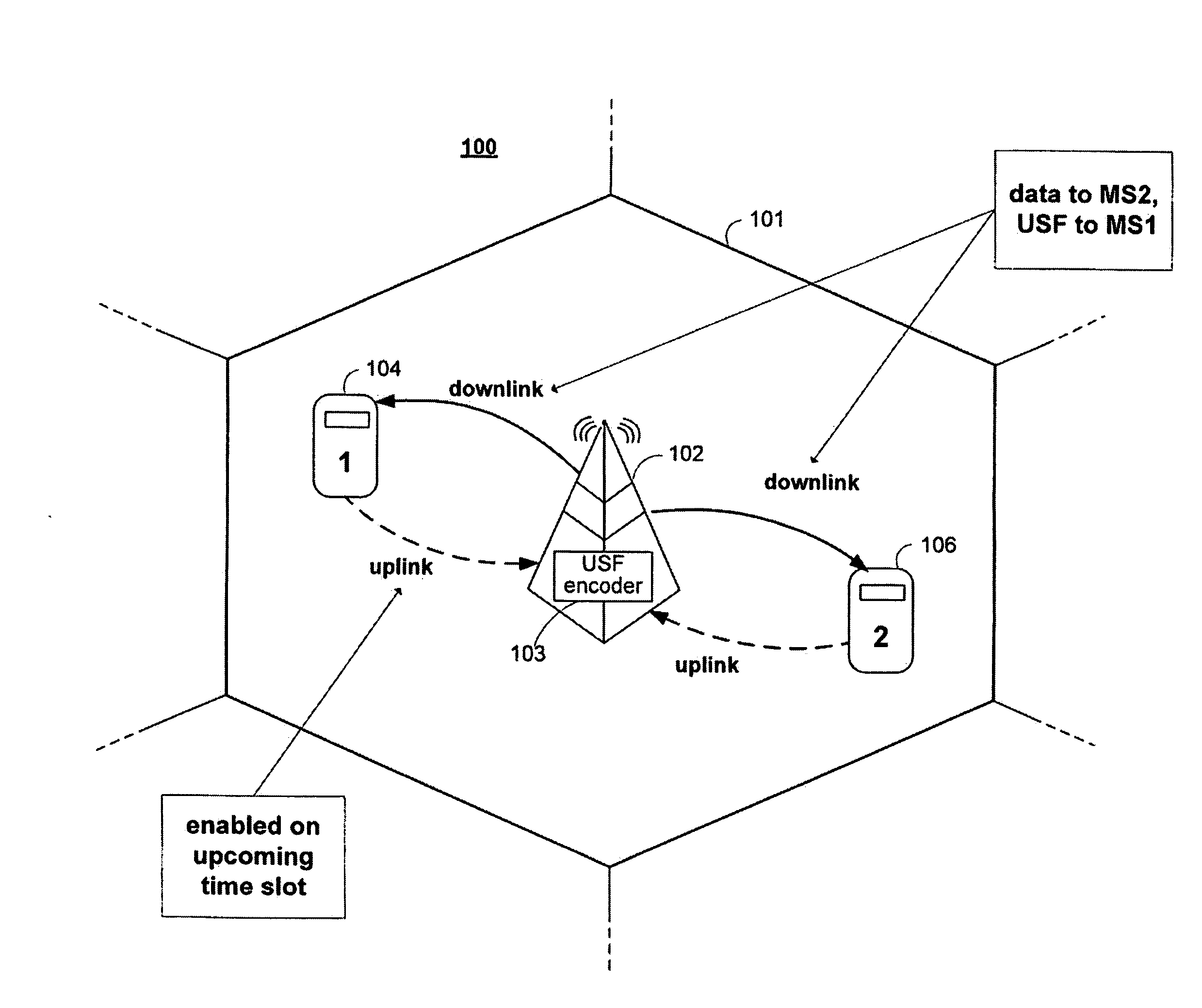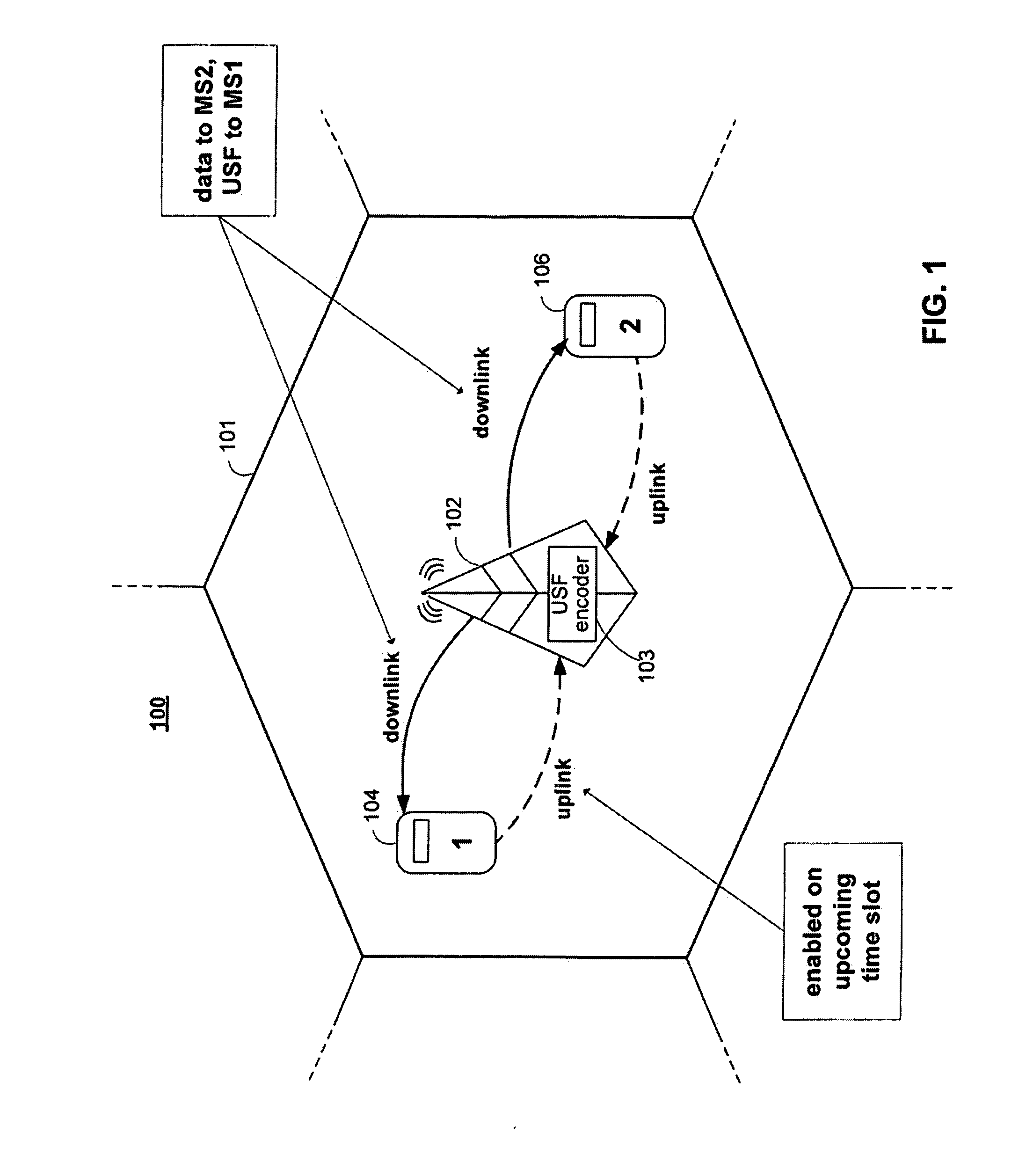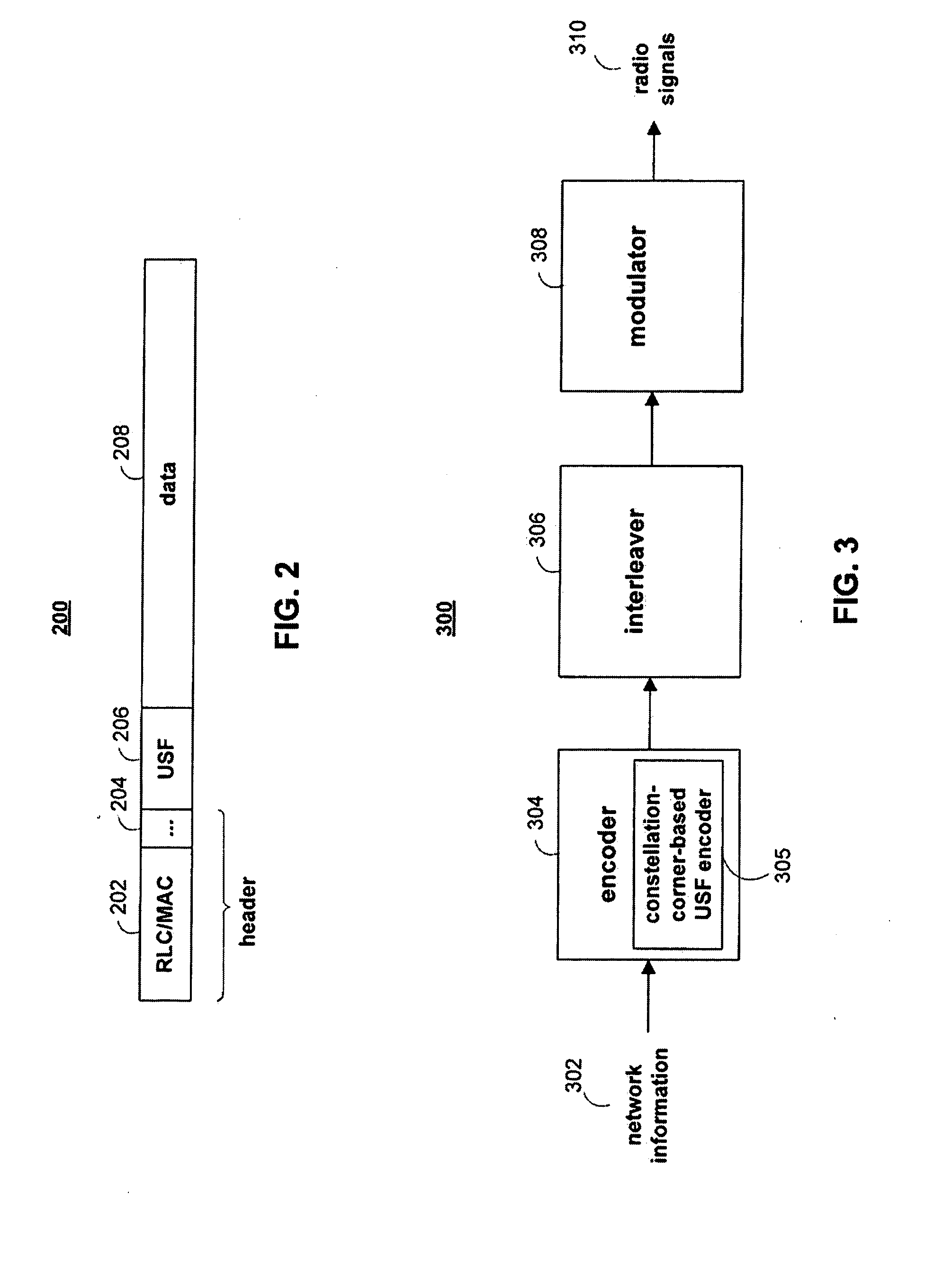Usf coding
a technology of usf and coding, applied in the field of cellular networks, can solve the problems of limited physical communication resources, and achieve the effect of easy differentiation and interpretation, and resilience to any nois
- Summary
- Abstract
- Description
- Claims
- Application Information
AI Technical Summary
Benefits of technology
Problems solved by technology
Method used
Image
Examples
Embodiment Construction
[0029]FIG. 1 shows an illustrative cellular system 100. Cellular system 100 can include a plurality of base stations that are interconnected to form a mobile or cellular network. For example, cellular system 100 can include base station 102. Base station 102 may be configured to communicate with mobile stations within its radio communication range via radio signals. Radio cell 101 may represent the physical area that lies within the radio communication range of base station 102.
[0030]Base station 102 may be able to communicate with mobile station 104 (“MS1”) and mobile station 106 (“MS2”), which are both located within radio cell 101, and with other mobile stations that are also within radio cell 101 (not shown). For example, base station 102 may broadcast information to both mobile station 104 and 106, as well as to the other mobile station in range, and each of the mobile stations may be operable to transmit information to base station 102. Transmissions from base station 102 to m...
PUM
 Login to View More
Login to View More Abstract
Description
Claims
Application Information
 Login to View More
Login to View More - R&D
- Intellectual Property
- Life Sciences
- Materials
- Tech Scout
- Unparalleled Data Quality
- Higher Quality Content
- 60% Fewer Hallucinations
Browse by: Latest US Patents, China's latest patents, Technical Efficacy Thesaurus, Application Domain, Technology Topic, Popular Technical Reports.
© 2025 PatSnap. All rights reserved.Legal|Privacy policy|Modern Slavery Act Transparency Statement|Sitemap|About US| Contact US: help@patsnap.com



